Pep Guardiola met Javi Gracia once again after City’s 2-1 win over Watford in December. This time, however, both teams had different priorities to target considering their positions in the Premier League. City were looking to win their sixth consecutive game to hold a maintain their advantage over Liverpool, while Watford sought to maintain their position in seventh.
Manchester City hosted Watford before important fixtures outside the Premier League for both teams. The Etihad turf will need to be raked and forked again before their Champion’s League tie against Schalke tomorrow. On the other hand, Watford, with a positive run in the FA Cup, will prepare to face Crystal Palace this weekend. Inevitably, using the squads economically would also be the focus of this game for both managers.
In this tactical analysis we see how Watford deployed a rope-a-dope tactic to face league front-runners Manchester City.
Lineups
Both managers stuck to their working formations (4-3-3 for Guardiola and 4-1-4-1 for Gracia). However, their objectives of squad rotation and resting their players were reflected in their selections.
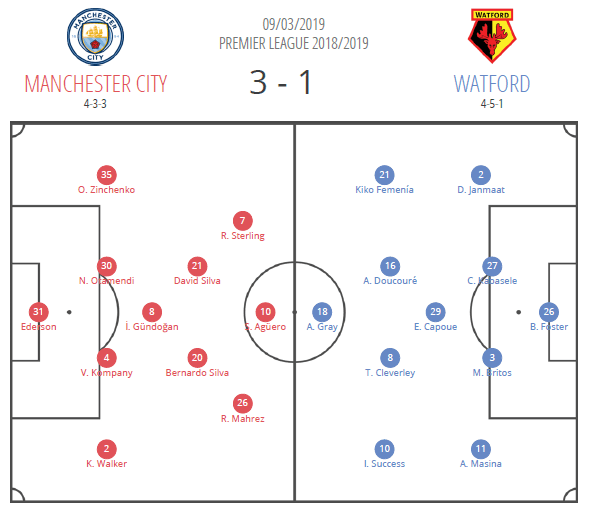
Guardiola was without Fernandinho and Kevin De Bruyne through injury. He benched Laporte and gave skipper Vincent Kompany important minutes for his rhythm after a return from injury. Gabriel Jesus and Leroy Sané were also seen on the bench to share minutes with Sergio Agüero and Raheem Sterling respectively.
Watford’s main men Troy Deeney and ex-Barcelona forward Gerard Deulofeu were missing from the starting line-up ahead of the FA Cup. Javi Gracia had them on bench though, as part of a plan B. Étienne Capoue donned the captain’s armband after missing the previous December fixture against City due to suspension.
Tactical approach
Guardiola has reiterated many times in his press conferences about his disinclination to change his aggressive attacking approach. He needed his squad to be in their best shape for Tuesday’s Champions League second leg. Thus, it was best for City to thrive in a consistent attacking phase in their opponent’s half. They maintained possession without spending energy on transitions, similar to the way they have approached most teams in the league.
Watford chose to park the bus as deep as they could. Like Bournemouth and West Ham United in City’s previous fixtures, Watford had a better chance to break on the counter. Gracia had a similar strategy back in December. With no intention of contesting the three points against the league leaders, he went overboard in his defensive tactics.
Rope-a-dope
Watford’s structure for the most part of the first half looked like two rows of defenders and zero forwards. In this 6-4 shape, they tried to close every bit of space for City’s players to play through. Agüero missed an open header opportunity, but other than this instance, City were unable to create real chances.
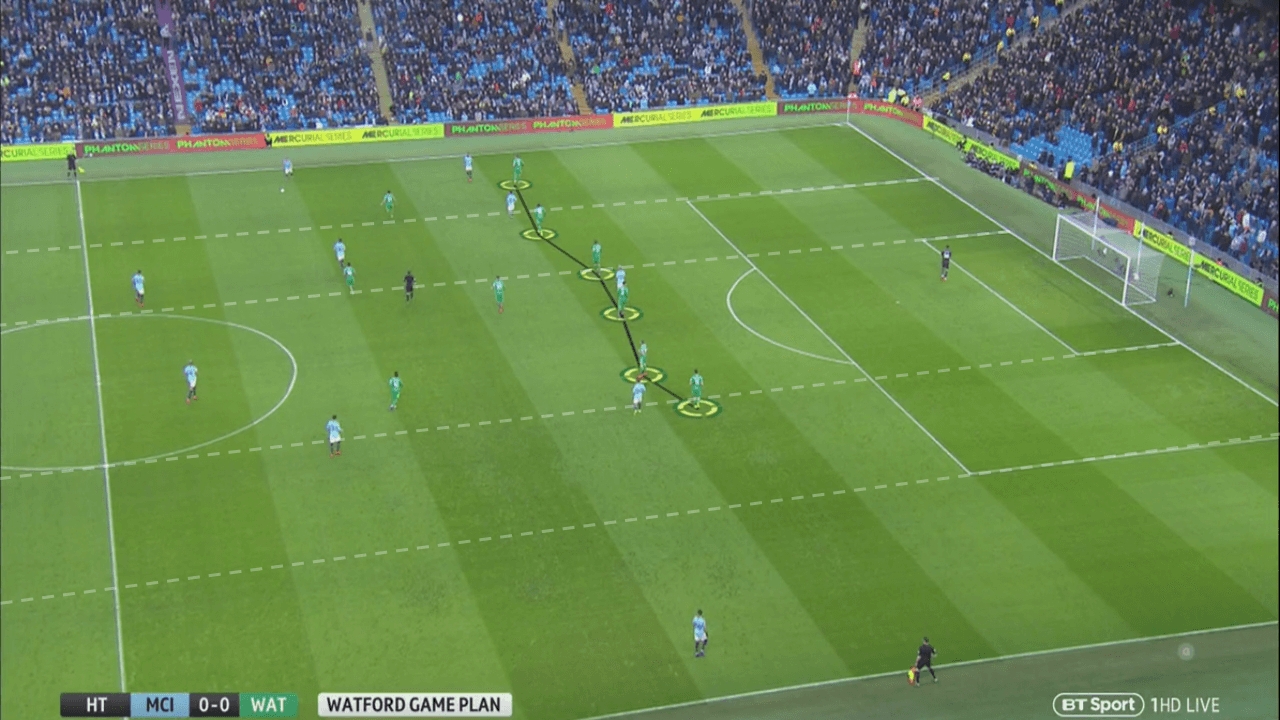
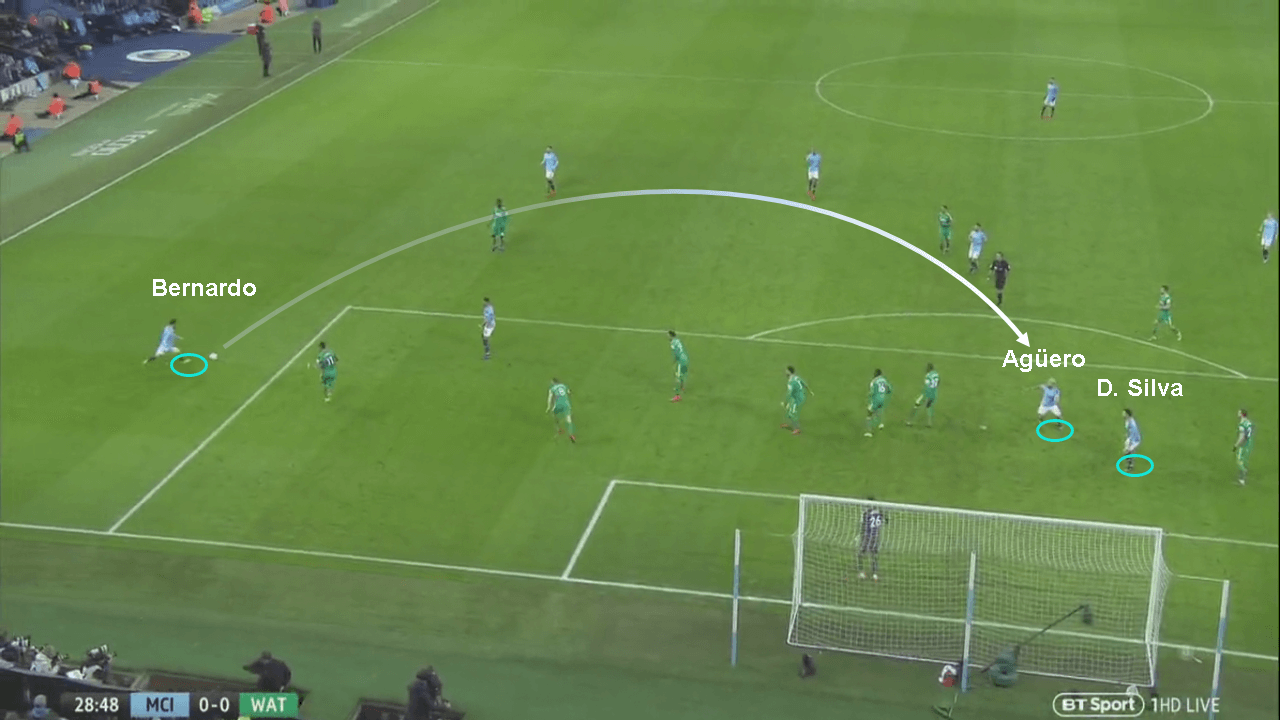
Guardiola has been slowly resurrecting his City’s side along the template of his glorious Barcelona years. Keeping maximum possession and fluid movements, the only goal is to attack. However, most teams that have faced City this season have chosen to respond by sitting deep and hitting them on fast counters.
Reminiscent of Mohammed Ali’s strategy to stay on the ropes and absorb George Foreman’s punches in the Rumble in the Jungle, this strategy can be successful in frustrating City’s midfielders and forcing a lapse in concentration defensively.
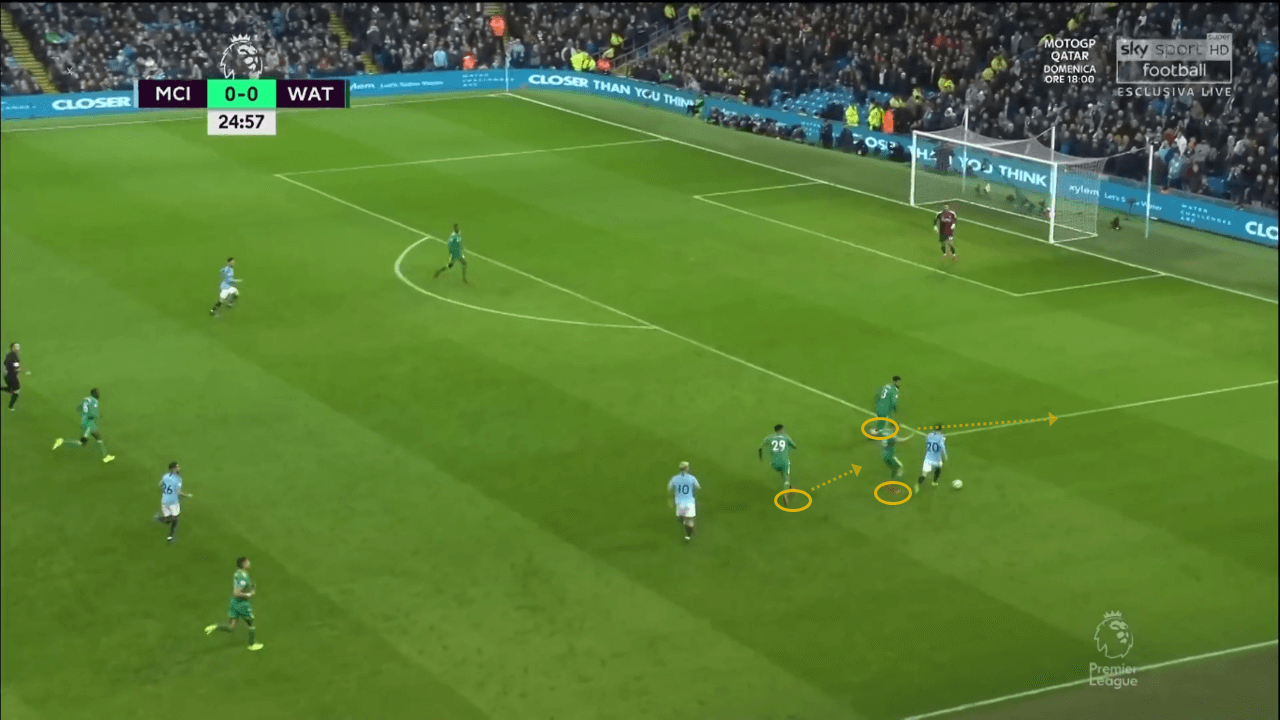
Capoue and Abdoulaye Doucouré often played deep in the defensive line making a line of six with barely any room for City to penetrate. Watford would also shuffle across to overcome City’s numerical superiority on one side while man-marking the free players on the other side. This strategy held firm for Watford. Although City played with an incredibly high line, they weren’t able to see an opportunity past a wall of Watford players.
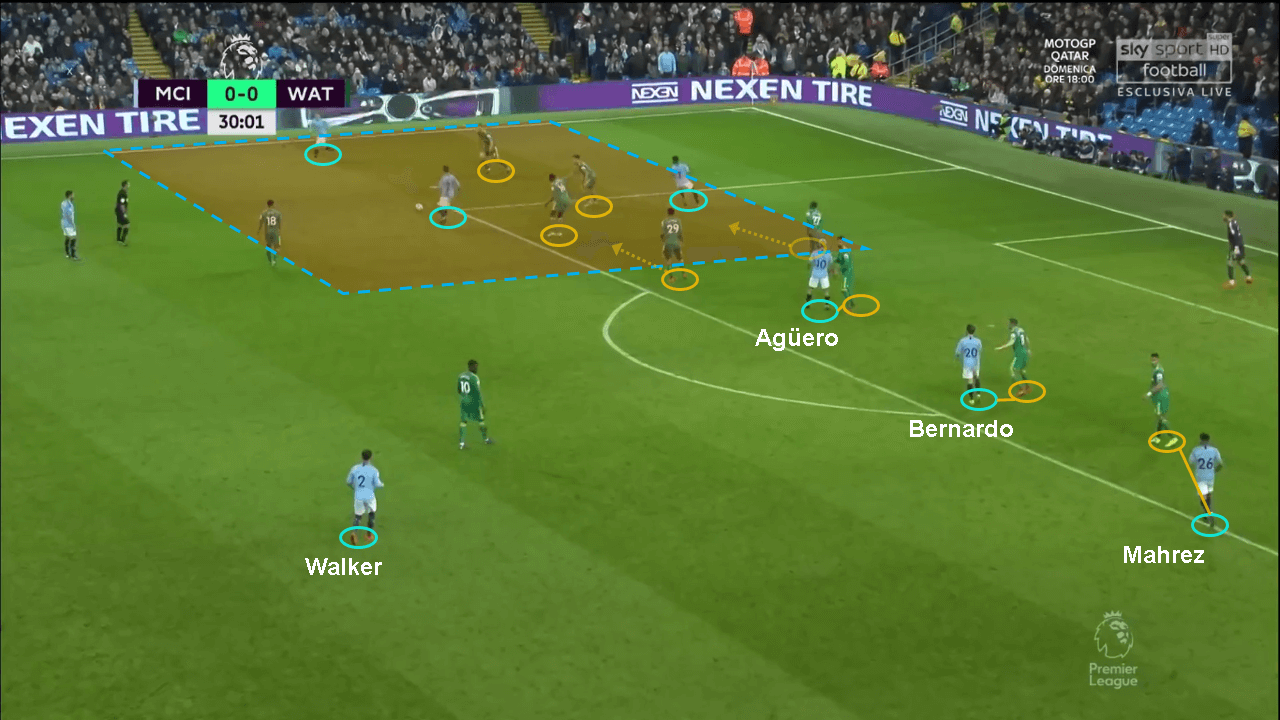
How did Watford contain City in the first half?
Against an iron-walled Watford structure, City looked like a fly incessantly driving into a window. Every wave of attack ended in a loss of possession, and although there were no turnovers, City’s players looked creatively uninspired overall.
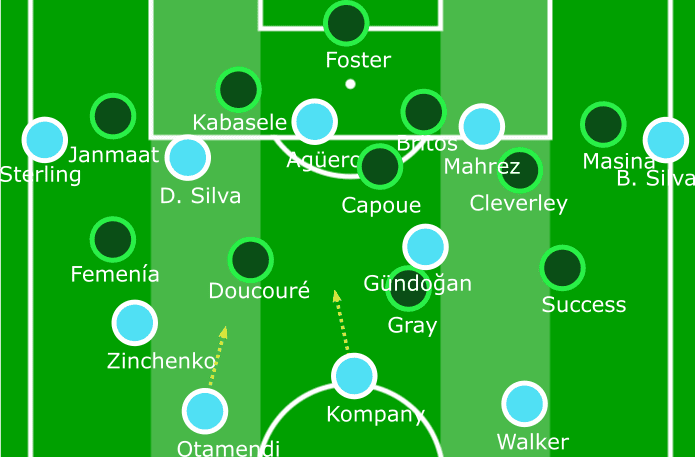
Nicolás Otamendi and Vincent Kompany, who held most of the possession, almost played as midfielders. They often attacked the half-spaces and central corridors driving forward with the ball but finding no options. Agüero, David Silva, Raheem Sterling and Bernardo Silva at times had the Watford line pinned back, but there were no players other than İlkay Gündoğan to link play between the lines. City were sometimes forced to play it long and direct in search of an opening.
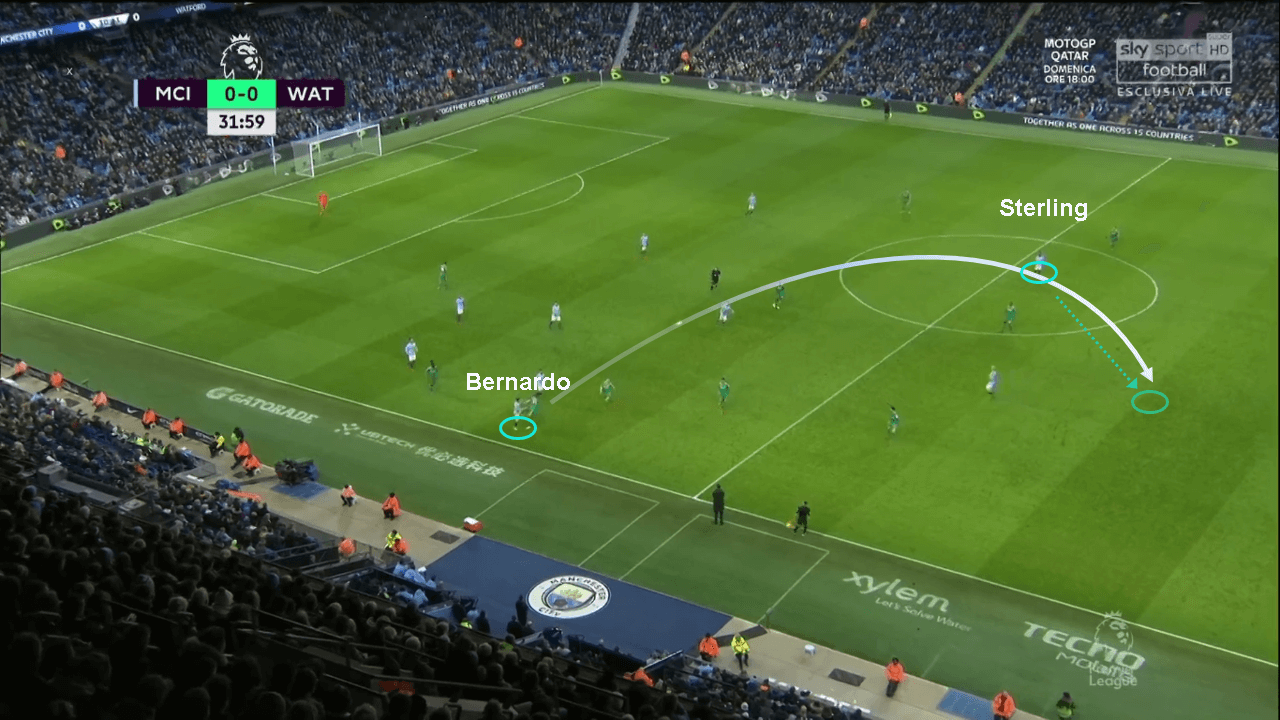
If we examine City’s shape in terms of outside and inside players, there were nine on the outside, and just one to bridge the defence and midfield. Otamendi almost found himself dribbling to the edge of Watford’s box with all his teammates marked tightly. Raheem Sterling also had many poor moments which Guardiola didn’t hesitate to point out in his post-game interview.
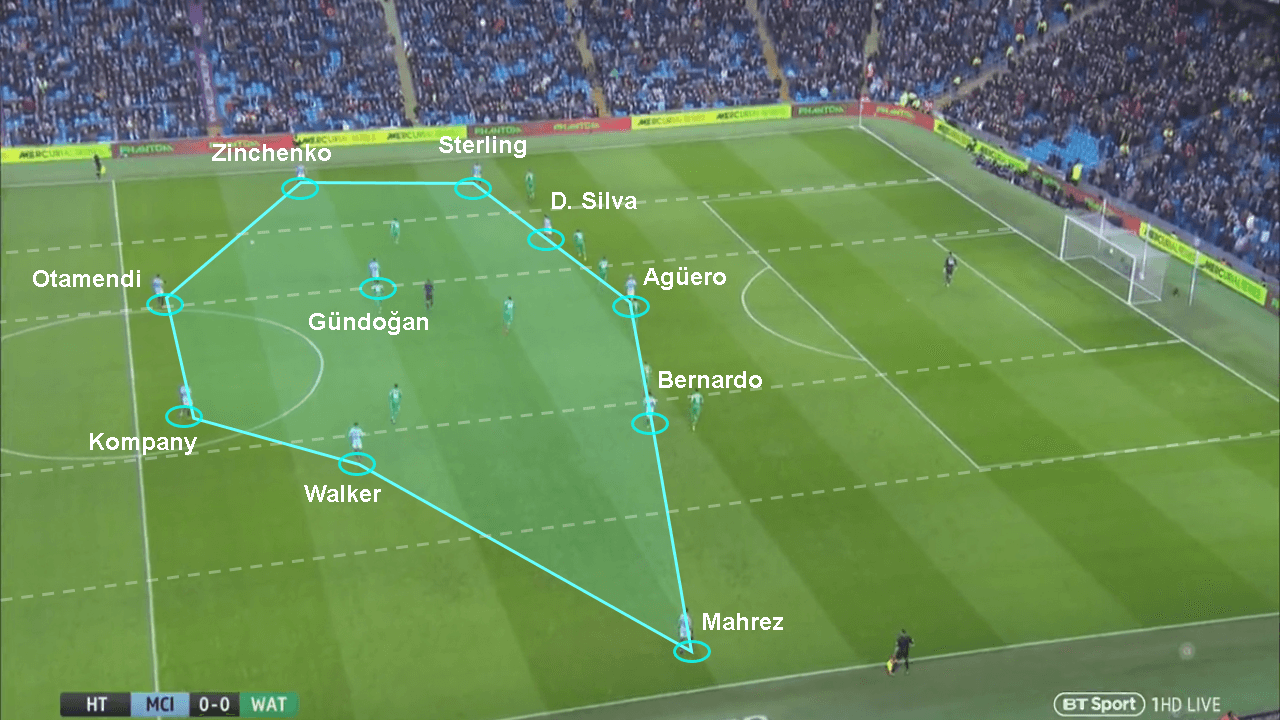
The first half ended 0-0 and Gracia’s one-point objective looked to be shaping up successfully for Watford. City on the other hand were compelled to induce some tactical modifications lest they risk losing points to Liverpool.
Sterling’s reincarnation
Fifteen minutes. That’s all it took for Raheem Sterling to hammer in a hat-trick for City, and steal the man-of-the-match award. He is now a top contender for player of the season in the Premier League. How did he reinvent himself during the half-time break?
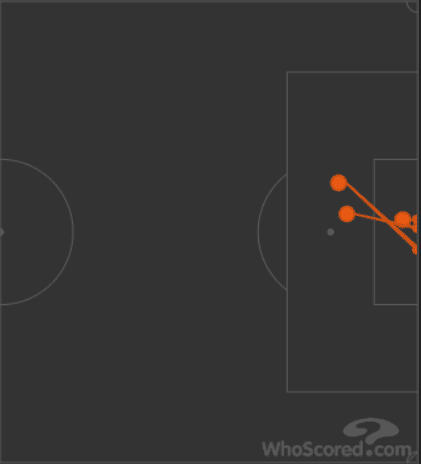
Guardiola instructed Sterling to keep it simple and play on the shoulder of Daryl Janmaat. He timed his runs to perfection and the three goals followed in quick succession starting from the 46th minute. Although the first goal was coated with controversy, it was simply Sterling’s wide run that almost guided the ball into the Watford net with a remote control.
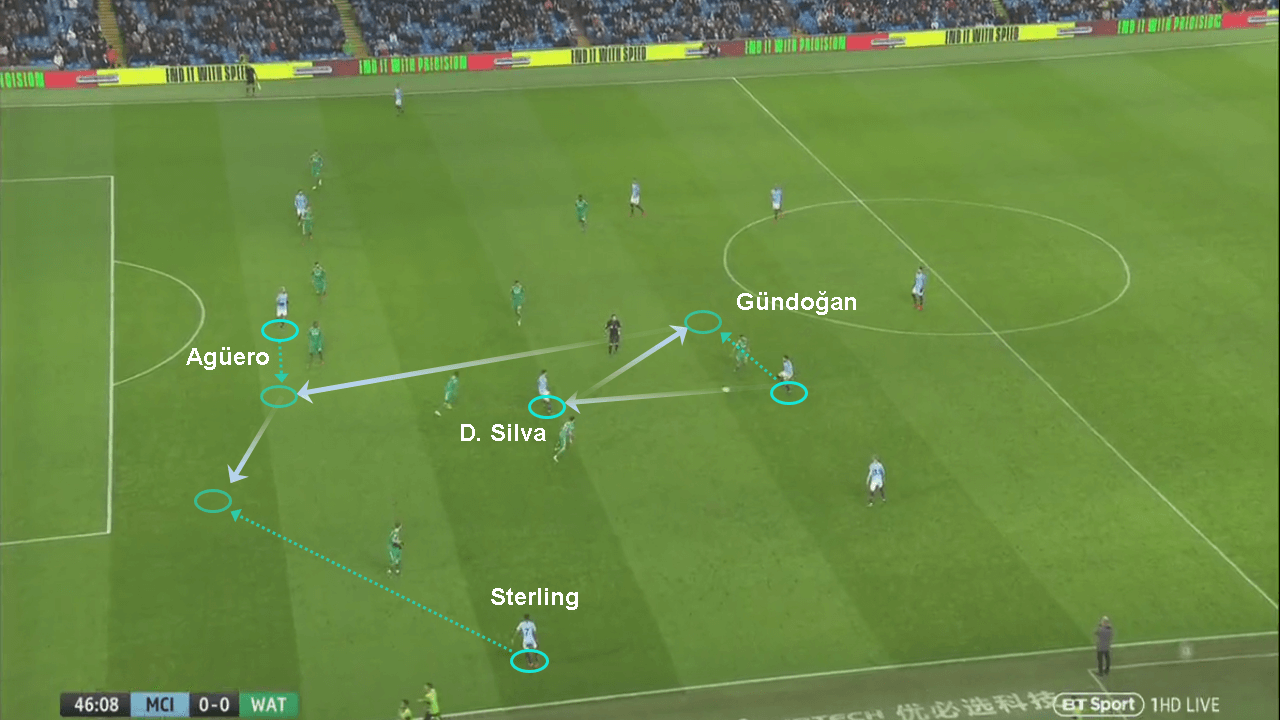
The two goals that followed quickly before the hour mark were made off identical runs on Janmaat’s blind side by Sterling. Apart from Sterling, Guardiola also made David Silva play deeper and between the lines to facilitate the crucial link-up play. Unsurprisingly, David Silva initiated the move for all three goals.
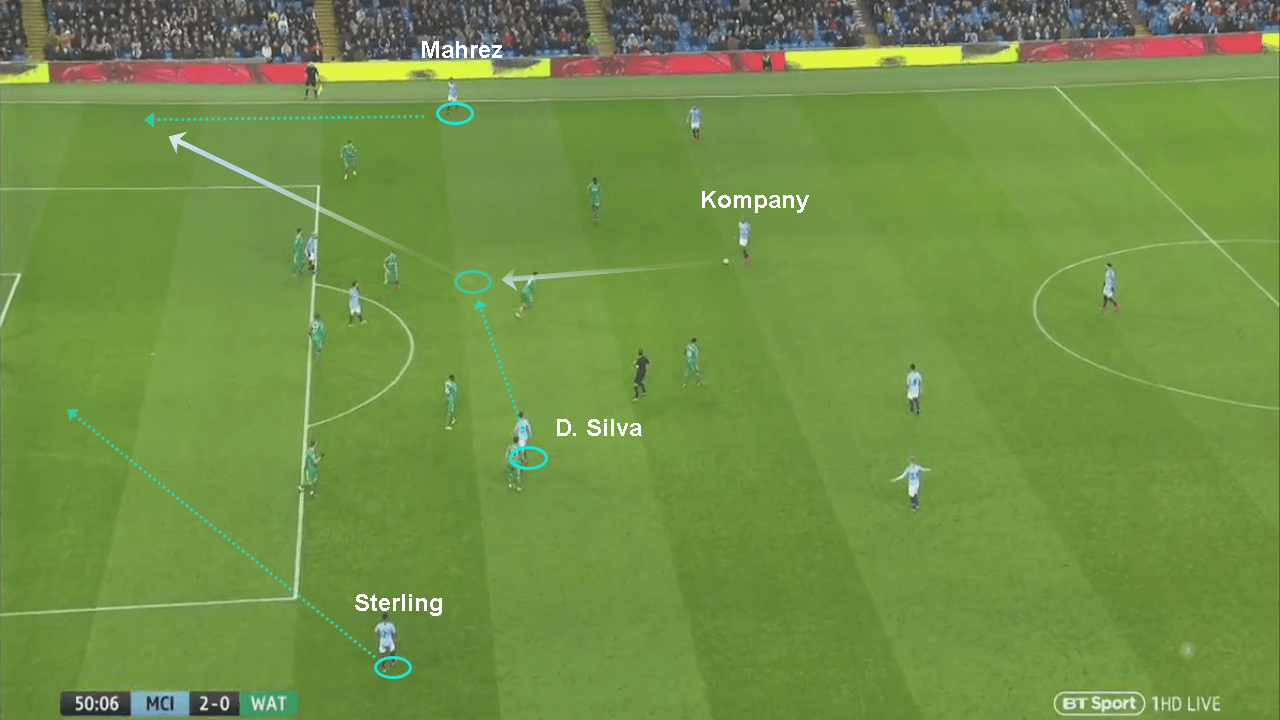
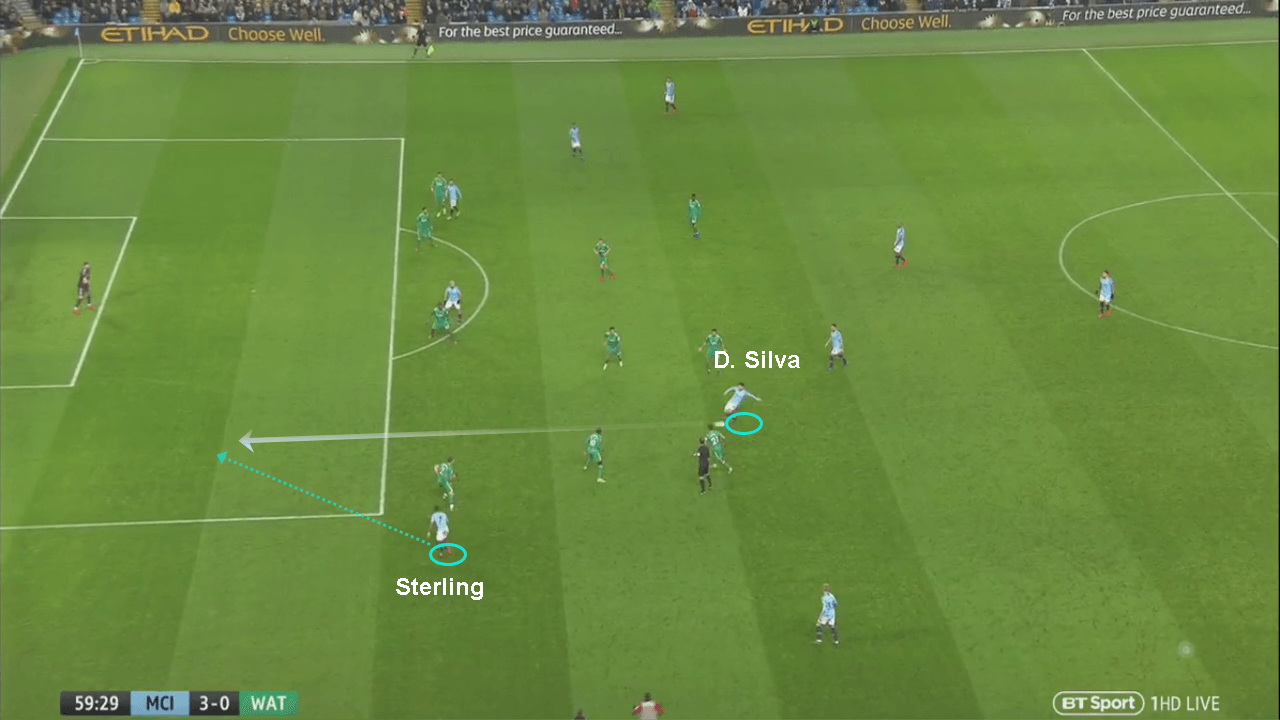
Guardiola astutely identifies City’s issues
One of the key differences for City was the way they changed their approach in their second half. They decided against playing too high, inviting the press from Watford. This opened up spaces for David Silva, Bernardo Silva and even Agüero to slot in and stream through passes. There were now more players playing inside, especially in the pockets of space between Watford’s lines.
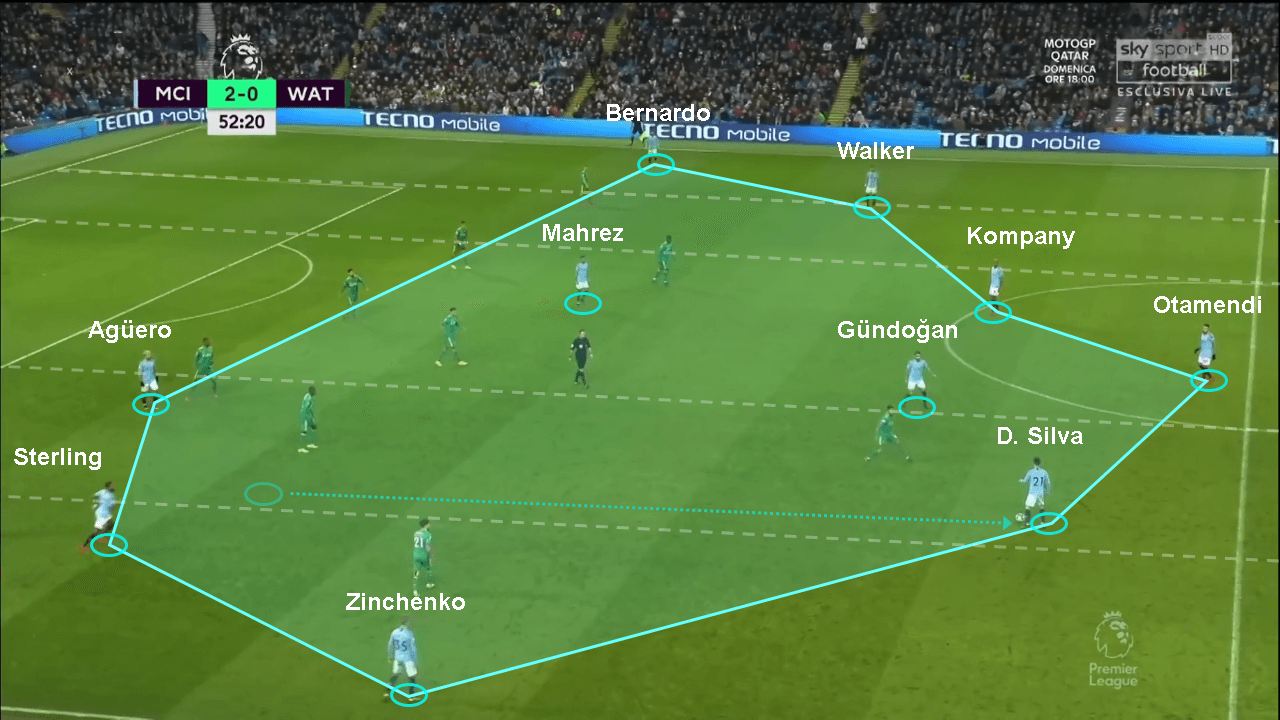
City’s selection for this game had a role to play in the way the first half played out for them. David Silva and Gündoğan are Pep’s best players who can operate in tight spaces between defensive lines. Fernandinho and Kevin De Bruyne on the other hand offer a lot of defensive cover and stability. Missing both of them meant the defensive cover responsibility shifted onto City’s central defenders.
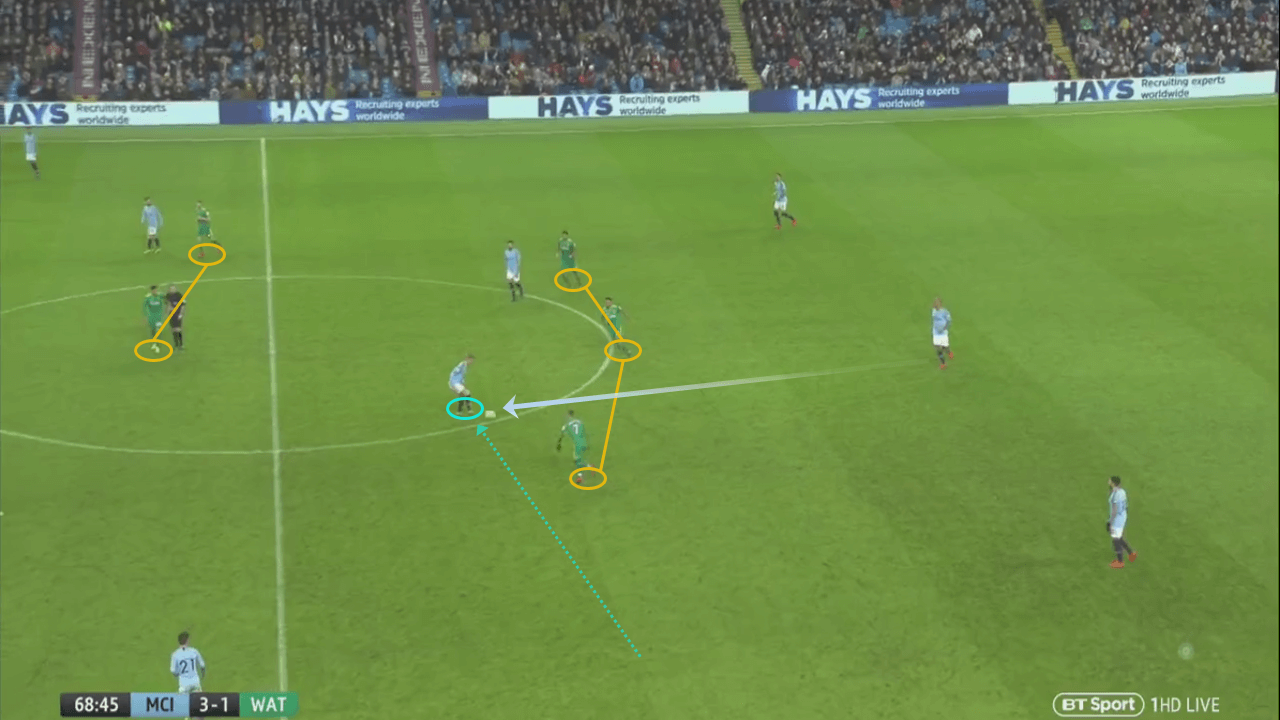
There was a specific difference in the behavior of the centre-backs as well. While in the first half they attacked higher up, in the second half Otamendi and Kompany stayed deep to switch the point of attack quickly. The number of passes also improved for City in the second half. They limited themselves to one and two-touch passing while increasing the tempo of play.
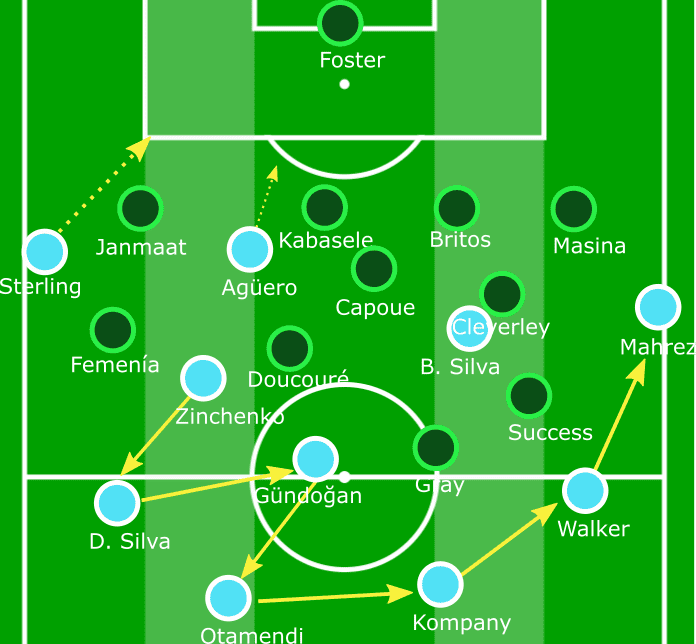
Watford’s reply
With the third goal, Gracia was forced to switch to plan B. He brought on Deeney and Deulofeu with an attacking mentality. They managed to catch City’s back line including Ederson off-guard. City barely had any defending to do all game and were immediately punished for their lapse in concentration. Watford scored with their only shot on goal.
Although playing in a more attacking manner during the final half-hour made the game more interesting to watch, there were many instances where Watford were open and liable to counter-attacks. The central midfielders for Watford no longer collapsed onto the defensive line and pressed City higher.
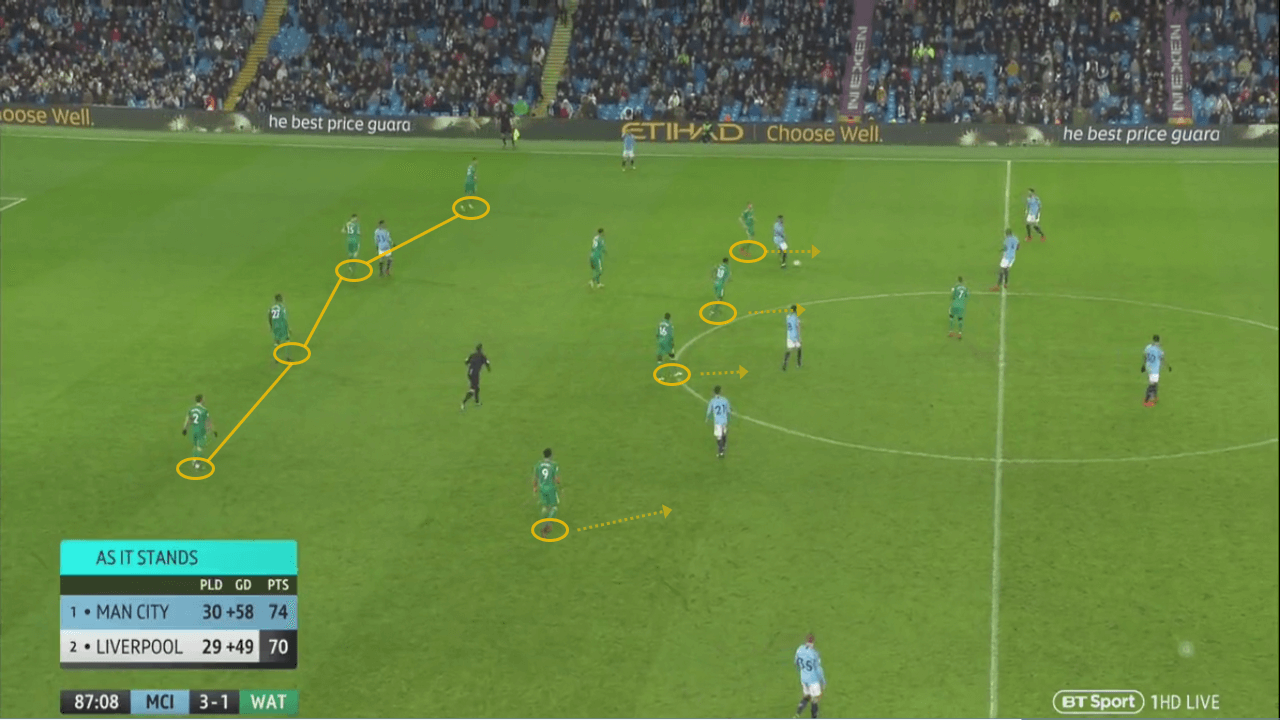
Considering Watford’s objective was to salvage a point at the most, it was understandable that their decision to attack was left too late. In Gracia’s post match statement he declared:
“In the first half we had a very good performance. We were better defensively because we were well organised, we didn’t concede many chances.
“In the second half, the game changed. After conceding the first goal, there were some moments when we weren’t so focused and then conceded two goals. Then it was impossible to have the option to get any points.”
Conclusion
Pep Guardiola was not content with his side’s overall performance. Nevertheless, he was satisfied that City are able to consistently earn three points to stay on top coming into the final stretch. Although he admitted it would be impossible for City to not drop points, he has somehow been managing to keep City’s title hopes alive with Liverpool breathing down their neck.
Before facing Schalke, City will have to focus on defensive organisation and discipline which Guardiola quoted as “everything he wants to achieve in his football”. Watford slipped to eighth place after losing points to City but will nevertheless be a defensive hurdle for Crystal Palace in the FA Cup.
*When originally published, this analysis stated that Fernandinho and Kevin De Bruyne were rested by Pep Guardiola, when in fact they were both injured. This has now been amended.
If you love tactical analysis, then you’ll love the digital magazines from totalfootballanalysis.com – a guaranteed 100+ pages of pure tactical analysis covering topics from the Premier League, Serie A, La Liga, Bundesliga and many, many more. Pre-order your copy of the March issue for just ₤4.99 here, or even better sign up for a ₤50 annual membership (12 monthly issues plus the annual review) right here.

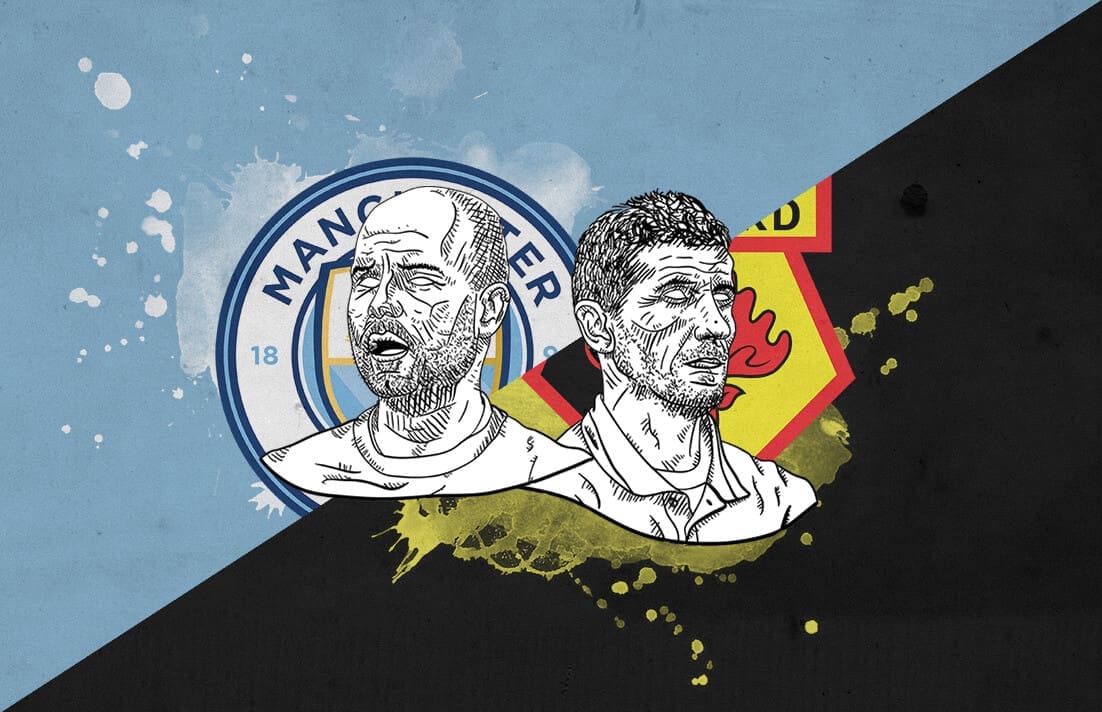



Comments